
BIOLOGICAL TRACE ELEMENT RESEARCH
metrics 2024
Exploring the Critical Roles of Trace Elements in Life
Introduction
BIOLOGICAL TRACE ELEMENT RESEARCH, published by SpringerNature, is a prestigious academic journal dedicated to advancing the understanding of trace elements and their critical roles in biological systems. With an impressive range of quartile rankings across multiple disciplines—including Q1 in Inorganic Chemistry and Q2 across various medical and biochemical categories—this journal stands out in its field. Since its inception in 1979, it has provided a vital platform for researchers worldwide to disseminate innovative findings that enhance our knowledge of trace elements in relation to health, environment, and medicine. The journal’s impact is reflected in its notable Scopus rankings, positioning it within the top echelons of biochemistry and medicine. Although primarily a subscription-based publication, it remains an essential resource for professionals, educators, and students alike, seeking to deepen their understanding of the complexities associated with trace elements.
Metrics 2024
 0.76
0.76 3.40
3.40 3.70
3.70 102
102Metrics History
Rank 2024
Scopus
IF (Web Of Science)
JCI (Web Of Science)
Quartile History
Similar Journals

JOURNAL OF APPLIED TOXICOLOGY
Transforming Toxicology Through Rigorous ExaminationJOURNAL OF APPLIED TOXICOLOGY, published by Wiley, stands as a leading platform in the field of toxicology, focusing on the rigorous examination of chemical substances and their effects on biological systems. With an impressive Impact Factor, it ranks in the top quartile (Q2) for toxicology journals, reflecting its esteemed position within the scientific community. The journal, identifiable by its ISSN 0260-437X and E-ISSN 1099-1263, has been an invaluable resource since its inception in 1981, and it continues to serve as a conduit for innovative research and practical applications through 2024. Positioned at the forefront of the field, it garners recognition in the Scopus Rankings, where it ranks #31 out of 133 journals in the toxicology category, placing it in the 77th percentile—a testament to its contribution to the advancement of pharmacology and toxicological sciences. While not an open-access journal, it remains accessible to a wide audience of researchers, professionals, and students eager to explore cutting-edge findings in applied toxicology, making it a pivotal resource for enhancing knowledge and fostering collaboration in the field.

JOURNAL OF PHOTOCHEMISTRY AND PHOTOBIOLOGY B-BIOLOGY
Exploring the Synergy of Light and Biological SystemsJOURNAL OF PHOTOCHEMISTRY AND PHOTOBIOLOGY B-BIOLOGY is a prestigious academic journal published by Elsevier Science SA in the Netherlands, focusing on the interdisciplinary domains of photochemistry and photobiology. With a notable impact factor and distinguished recognition across multiple disciplines, including Q1 rankings in Biophysics, Radiation, and Radiological and Ultrasound Technology, this journal is at the forefront of research dissemination in its field. The publication spans over three decades, from 1987 to 2024, reflecting its long-standing commitment to advancing knowledge in areas critical to both fundamental and applied science. Researchers and professionals are encouraged to submit original research articles, reviews, and short communications that explore the interactions between light and biological systems, with the aim of fostering innovative solutions impacting health and technology. Although it operates on a subscription model, this journal remains a vital resource for all those engaged in the scientific exploration of these dynamic fields.
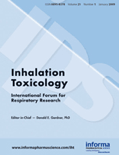
INHALATION TOXICOLOGY
Bridging Science and Health through Inhalation Studies.Inhalation Toxicology, published by Taylor & Francis Ltd, is a premier journal dedicated to advancing the field of toxicology with a particular focus on inhalation exposure and its impact on human health. Established in 1989, this journal provides a vital platform for original research, reviews, and case studies that explore the toxicological effects of inhaled substances, making it essential reading for researchers, health professionals, and regulatory scientists. With an Impact Factor that situates it in the Q3 category in both Health, Toxicology and Mutagenesis, the journal asserts its relevance within the scientific community, particularly emphasizing its contributions as indexed by Scopus rankings in related fields. Although it follows a traditional access model, the journal's commitment to delivering high-quality research continues to foster significant discussions and advancements in understanding inhalation toxicology. For those at the forefront of environmental science and pharmacology, Inhalation Toxicology is an indispensable resource for both current research and future innovations in the discipline.
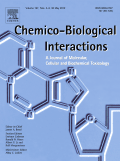
CHEMICO-BIOLOGICAL INTERACTIONS
Advancing Understanding in Pharmacology and ToxicologyCHEMICO-BIOLOGICAL INTERACTIONS is a premier journal published by Elsevier Ireland Ltd, dedicated to advancing the field of chemical and biological interactions since its inception in 1969. With a robust focus on pharmacology and toxicology, the journal holds a prestigious Q1 ranking in both Medicine (miscellaneous) and Toxicology, reflecting its significance in disseminating influential research. As part of the Scopus database, it ranks #21 out of 133 journals in Toxicology, positioning it in the 84th percentile and ensuring high visibility for cutting-edge studies. This scholarly platform serves as a crucial resource for researchers, professionals, and students who seek reliable and innovative findings at the intersection of chemistry and biology. While currently not open access, CHEMICO-BIOLOGICAL INTERACTIONS provides a comprehensive collection of articles that contribute to the ongoing dialogue in toxin research and its implications on medicinal chemistry, thereby fostering advancements in public health and safety.
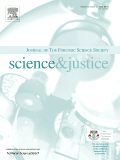
SCIENCE & JUSTICE
Empowering Justice Through Scientific Inquiry.Science & Justice is a leading international journal published by Elsevier Science Ltd, dedicated to the interdisciplinary examination of the intersection of justice and science, especially within the realms of forensic science and pathology. Established in 1995, this reputable journal has garnered a commendable Q2 rank in the category of Pathology and Forensic Medicine, reflecting its significant contributions to advancing knowledge in these critical fields. With an ISSN of 1355-0306 and an E-ISSN of 1876-4452, the journal is indexed in Scopus, positioning it in the top 68th percentile among its peers. The objectives of Science & Justice include promoting research that bridges scientific methodologies with justice-related applications, making it an invaluable resource for researchers, professionals, and students alike. As the journal continues to evolve, it aims to interface scientific innovations with forensic practices, thereby enhancing the integrity of justice processes globally. Despite not offering Open Access options, it remains a pivotal reference point within the academic community focused on forensic science methodologies and their legal implications.

JOURNAL OF MEDICINAL FOOD
Unveiling the Therapeutic Potential of FoodJOURNAL OF MEDICINAL FOOD, published by MARY ANN LIEBERT, INC, is an esteemed peer-reviewed journal focused on the intersection of nutrition, food science, and medicine. With an ISSN of 1096-620X and an E-ISSN of 1557-7600, this journal has been a vital resource for the dissemination of research findings since its inception in 1998 and continues to thrive through 2024. Positioned in the Q3 quartile for both Medicine (miscellaneous) and Nutrition and Dietetics, the journal ranks #120 out of 398 in its category, reflecting its significance within the scientific community. The Scope encompasses a wide range of topics related to the therapeutic potential of food and dietary interventions, making it a critical source of knowledge for researchers, healthcare professionals, and students alike. Although it does not offer Open Access options, the journal's comprehensive articles contribute to the ongoing discourse in nutritional medicine, facilitating informed decision-making and advancing academic inquiry.

ARCHIVES OF TOXICOLOGY
Advancing the Frontiers of Toxicological ScienceARCHIVES OF TOXICOLOGY is a prestigious journal published by Springer Heidelberg, dedicated to advancing research in the field of toxicology and related disciplines. With a distinguished history dating back to 1930, this journal has continuously provided vital insights and groundbreaking studies, making it a cornerstone in the areas of health, toxicology, and medicine. Recognized for its high impact, it occupies a top-ranking position in Scopus, with remarkable quartile placements in 2023, categorizing it as Q1 in Health, Toxicology and Mutagenesis, and Q1 in Medicine (Miscellaneous). The journal highlights critical research and innovative methodologies, appealing to a diverse audience of researchers, professionals, and students committed to understanding the complexities of toxic substances and their implications for public health and environmental safety. The journal does not currently offer open access, allowing for a more traditional but rigorous peer-review process that ensures the quality and integrity of every published article. Join the global discourse in toxicological science with ARCHIVES OF TOXICOLOGY, where every contribution furthers the understanding of safety and toxicity in our world.
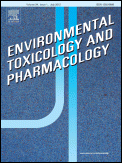
Environmental Toxicology and Pharmacology
Bridging the gap between toxicology and pharmacology.Environmental Toxicology and Pharmacology, published by Elsevier, is a leading journal dedicated to advancing our understanding of the effects of environmental pollutants on biological systems. With an ISSN of 1382-6689 and an E-ISSN of 1872-7077, this journal covers a wide range of studies related to toxicology, pharmacology, and environmental health. The journal is classified as Q2 in key categories such as Health, Toxicology and Mutagenesis and Medicine (miscellaneous), and sits impressively in Q1 for Toxicology, reflecting its strong impact in the field. As of 2023, it ranks #30 out of 133 in Toxicology and #40 out of 148 in Health, indicating its high relevance and contribution to research. While the journal is not currently open access, it remains a pivotal resource for researchers, professionals, and students seeking to explore the intricacies of environmental health effects. Its commitment to publishing high-quality peer-reviewed research positions it as a crucial platform for scientific dialogue and discovery.

MINERALIUM DEPOSITA
Fostering Global Dialogue in Geological SciencesMINERALIUM DEPOSITA is a premier journal in the fields of Economic Geology, Geochemistry, and Petrology, published by Springer. With an impressive 2023 impact factor and designated as Q1 in its category, this journal stands out in the academic landscape, showcasing the latest research and developments from 1966 to 2024. With a prominent rank in Scopus, holding the 3rd position in both Geophysics and Geochemistry and Petrology, it represents an invaluable resource for researchers and professionals alike. Although open access options may not be available, the journal's comprehensive coverage of mineral deposits promotes the global exchange of knowledge and advances in our understanding of the geological sciences. Positioned in Germany, MINERALIUM DEPOSITA serves as a crucial platform for innovative discussions, making it essential reading for students, professionals, and academics dedicated to exploring the complexities of earth sciences.
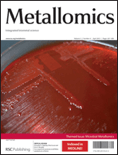
Metallomics
Illuminating the Path of Metal-Biology InteractionsMetallomics, published by Oxford University Press, is an esteemed journal with an ISSN of 1756-5901 and an E-ISSN of 1756-591X, specializing in the interdisciplinary field of metallomics—a critical area that examines the role of metals in biological systems. With a strong ranking in its categories, notably achieving Q1 status in Metals and Alloys and Q2 across fields such as Biochemistry, Biomaterials, Biophysics, and more, the journal serves as a pivotal resource for researchers, professionals, and students alike, facilitating cutting-edge discussions and discoveries. The journal's rigorous selection process ensures that only high-quality research is published, maintaining its reputation within the scholarly community. Despite lacking an Open Access option, its significant impact is reflected in its Scopus rankings, where it ranks 32nd in Materials Science and 21st in Chemistry (miscellaneous), emphasizing its influence and relevance. Metallomics invites submissions that contribute to the understanding of metal interactions in biological contexts, proposing new methodologies and insights that can shape future research in this dynamic and essential field.